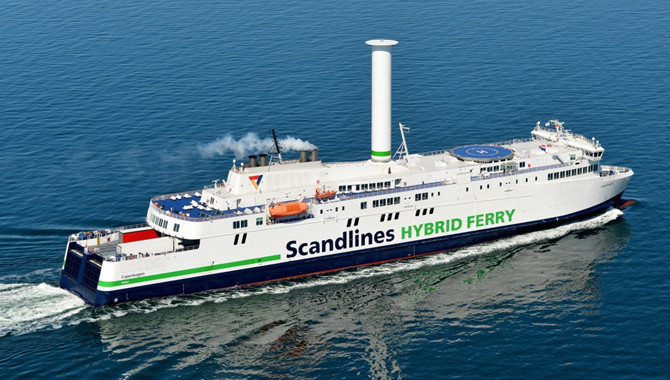Two weeks ago, the shipping industry was poised to respond to the outcomes of the 76th International Maritime Organization's (IMO) Marine Environmental Protection Committee (MEPC) meeting.
For many, interest focused on the introduction of the short-term technical requirements to reduce carbon intensity, based on the new Energy Efficiency Existing Ship Index (EEXI) and the operational carbon intensity reduction requirements, under the Carbon Intensity Indicator (CII). However, as the discussions closed, although the adoption of these technical and operational efficiency requirements was welcome, many shipping and environment groups claimed that their conservative targets over the next few years will not reduce carbon dioxide emissions quickly enough. The debate also highlighted a grave lack of consensus on greenhouse gas (GHG) reduction measures between IMO member states.
Fragmented forces
For CII, from 2020 – 2026, vessels need to achieve an 11% improvement in operational efficiency compared to 2019 measurements. For EEXI, by January 1 2023, all existing ships will be required to meet the EEXI standards, which are in essence, an extension of the Energy Efficiency Design Index (EEDI) phase 2. The EEDI ensures new ship designs meet the reference level for their ship type. For example, ships built between 2021-2025 are required to have a design efficiency, at least, 20% below the reference line.
Although shipowners will have to meet these regulatory targets, there is still ambiguity around market-based measures. It is highly likely that the European Commission, among others, will be looking to create a strong Emissions Trading System or regional emission measures to drive ambitions forward. Similarly, the US' push for zero carbon ships by 2050 hints that a devolved approach to decarbonising operations is emerging.
Despite a sense of inertia around the MEPC 76 outcomes and a lack of long-term direction, commercial pressure to decarbonise continues to mount. We already know that financiers are reviewing their maritime investments through ESG lenses and new carbon disclosure regimes are causing investors to examine environmental risks more closely. This is becoming acute through the lending decisions made by signatories to the Poseidon Principles and pressure from customers, through movements like the Sea Cargo Charter, for shipping to demonstrate how it contributes to the sustainability of global supply chains. While these factors might cause shipowners to think about changes that need to be made to existing and future fleets that stretch beyond current compliance, these drivers could also be the force to accelerate change, especially when it comes to incentivising high performing, low- and zero-carbon ships.
A business case for Rotor Sails
In light of the current situation, the case for wind power, and Norsepower's Rotor Sails, ticks the boxes for meeting regulatory targets as well as environmentally focused commercial drivers.
Not only does a retrofit or newbuild installation of the Rotor Sail support compliance with the new EEXI and CII rules, as a direct consequence it also significantly decreases fuel consumption and costs. This is based on every ton of fuel making over three tons of CO2. Therefore, the EEXI improvement is a direct consequence of significant decreases in fuel consumption and costs – making investments in wind propulsion technologies sound even when looked at on a simple financial basis.
Investment in clean technology that reduces fuel consumption also offers an opportunity to future proof vessels against inevitable fuel price increases as new fuels like ammonia and hydrogen enter the market. For example, a 10% fuel saving from Rotor Sails being installed can mean the difference between operating profitably or not as new fuels enter the market.
Looking forwards
Although the decisions taken at MEPC 76 were small steps rather than bold leaps, there is significant and constant change ahead. This will, naturally, place enormous pressure on shipowners and will lead to an increase in decommissioning and shipowners being forced out of business. To prevent widespread market consolidation and to future-proof high performing fleets, now is the time to look at vessels and consider their operational profile to make smart decisions while owners still have a degree of autonomy. Investing in the right clean technology now, such as proven solutions like Rotor Sails, will keep ships compatible with forthcoming regulations and enable profitability throughout the years ahead. By improving efficiencies and reducing emissions through wind power, shipowners and operators can enhance their customer relationships, improve access to favourable finance deals, ensure the profitability of the business and simultaneously demonstrate their own sustainability credentials.
Source:Tuomas Riski , CEO, Partner at Norsepower Oy Ltd
The opinions expressed herein are the author's and not necessarily those of The Xinde Marine News.
Please Contact Us at:
media@xindemarine.com


 Ningbo Containerized Freight Index Weekly Commentar
Ningbo Containerized Freight Index Weekly Commentar  Ningbo Containerized Freight Index Weekly Commentar
Ningbo Containerized Freight Index Weekly Commentar  Ningbo Containerized Freight Index Weekly Commentar
Ningbo Containerized Freight Index Weekly Commentar  BIMCO Shipping Number of the Week: Bulker newbuildi
BIMCO Shipping Number of the Week: Bulker newbuildi  Ningbo Containerized Freight Index Weekly Commentar
Ningbo Containerized Freight Index Weekly Commentar  Ningbo Containerized Freight Index Weekly Commentar
Ningbo Containerized Freight Index Weekly Commentar